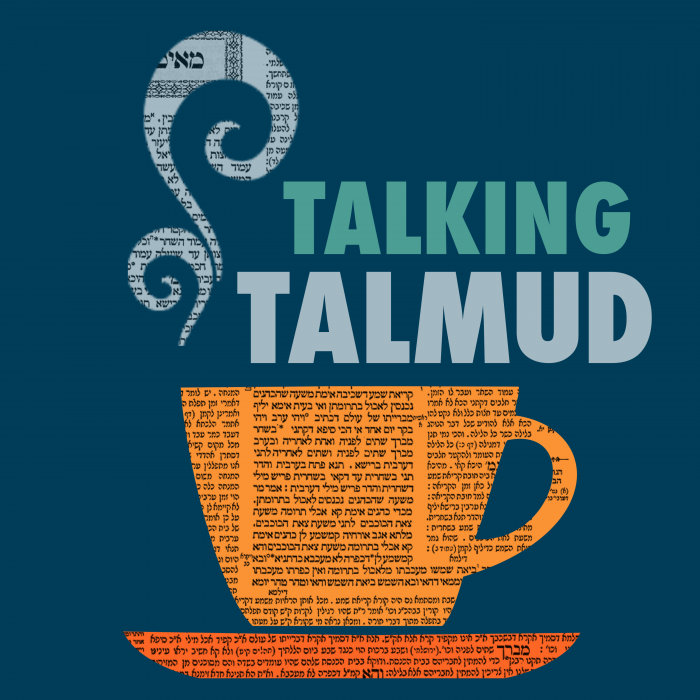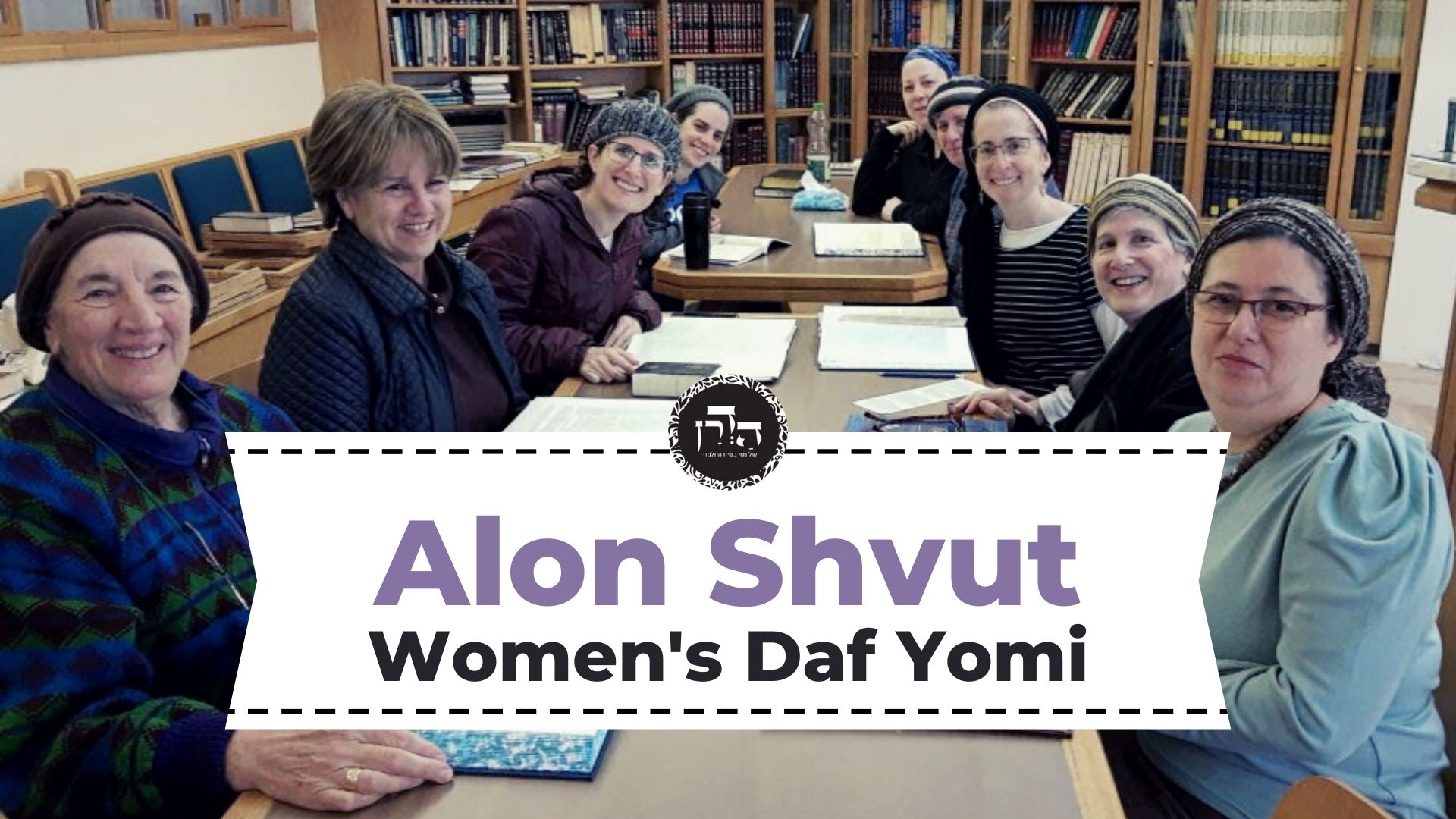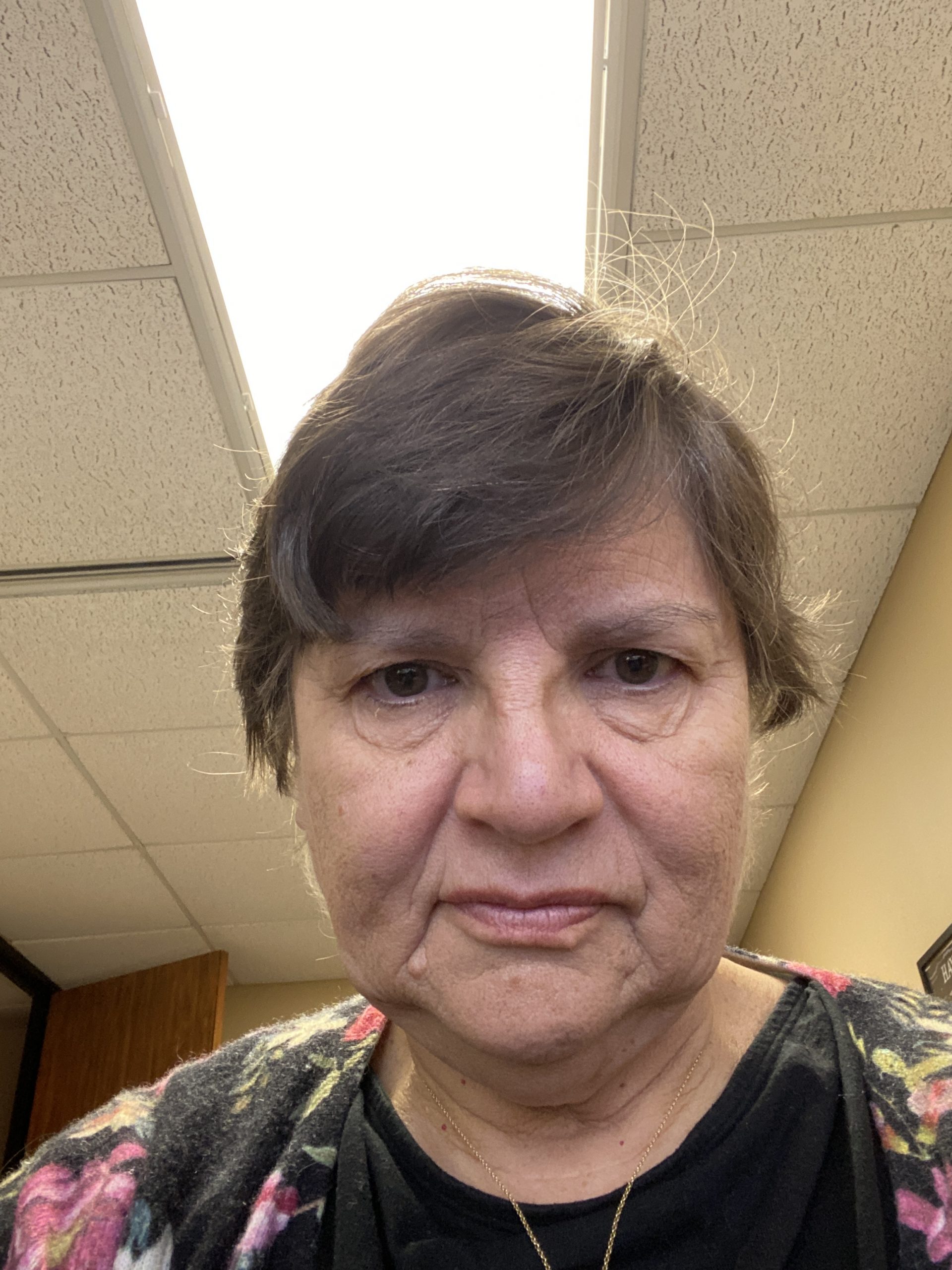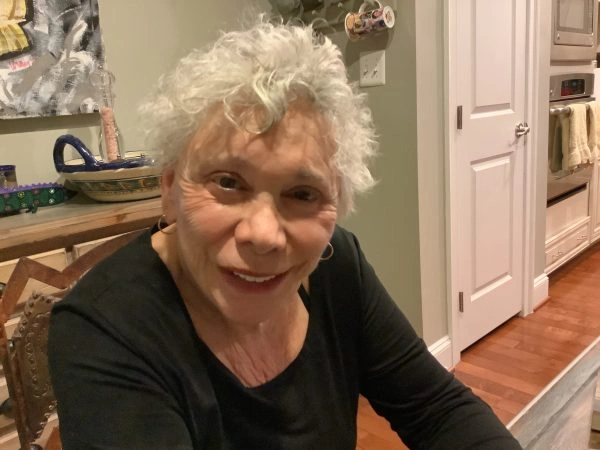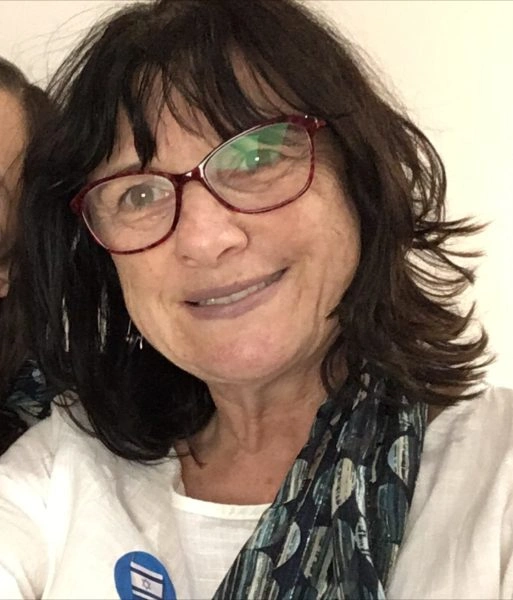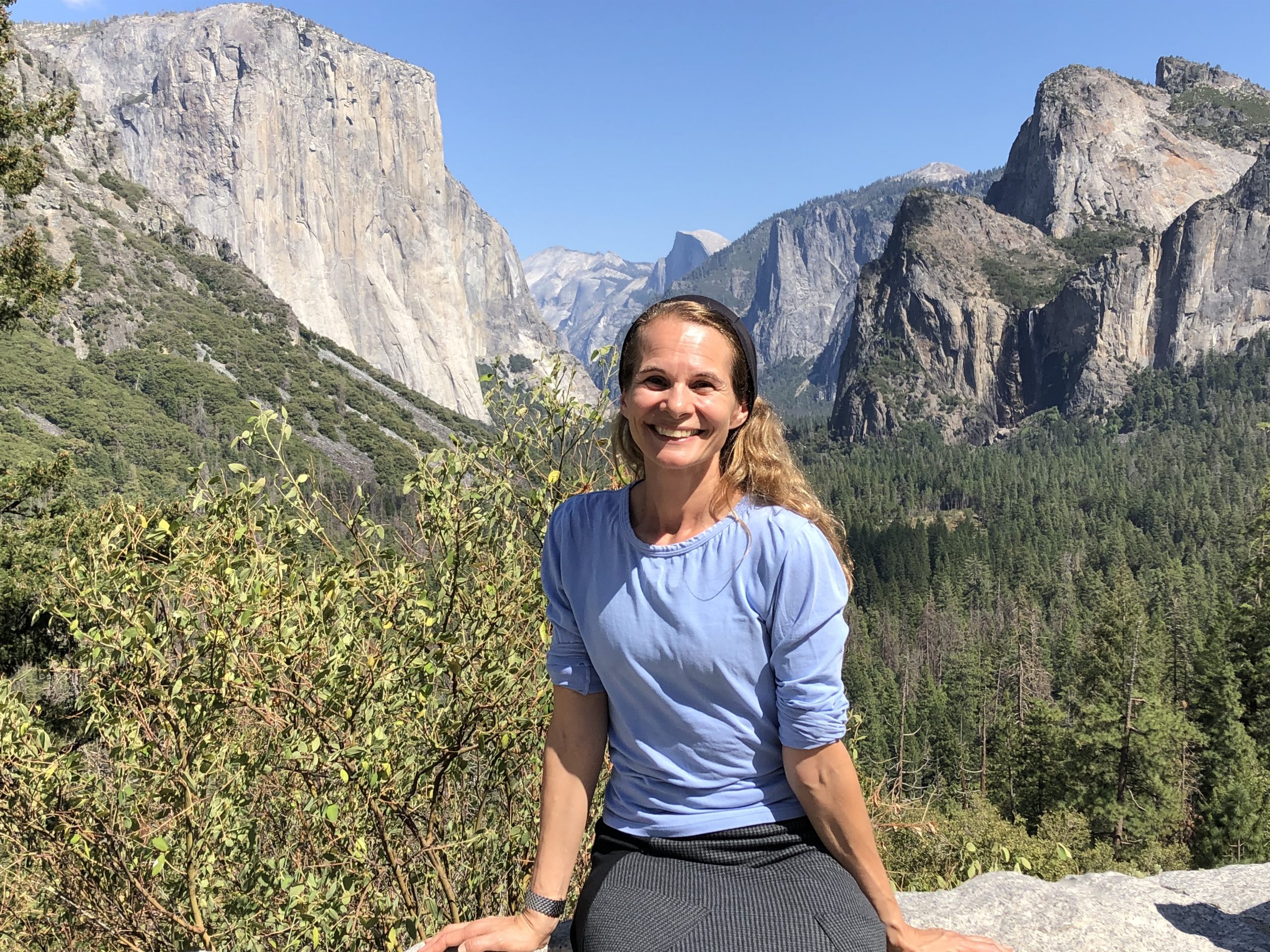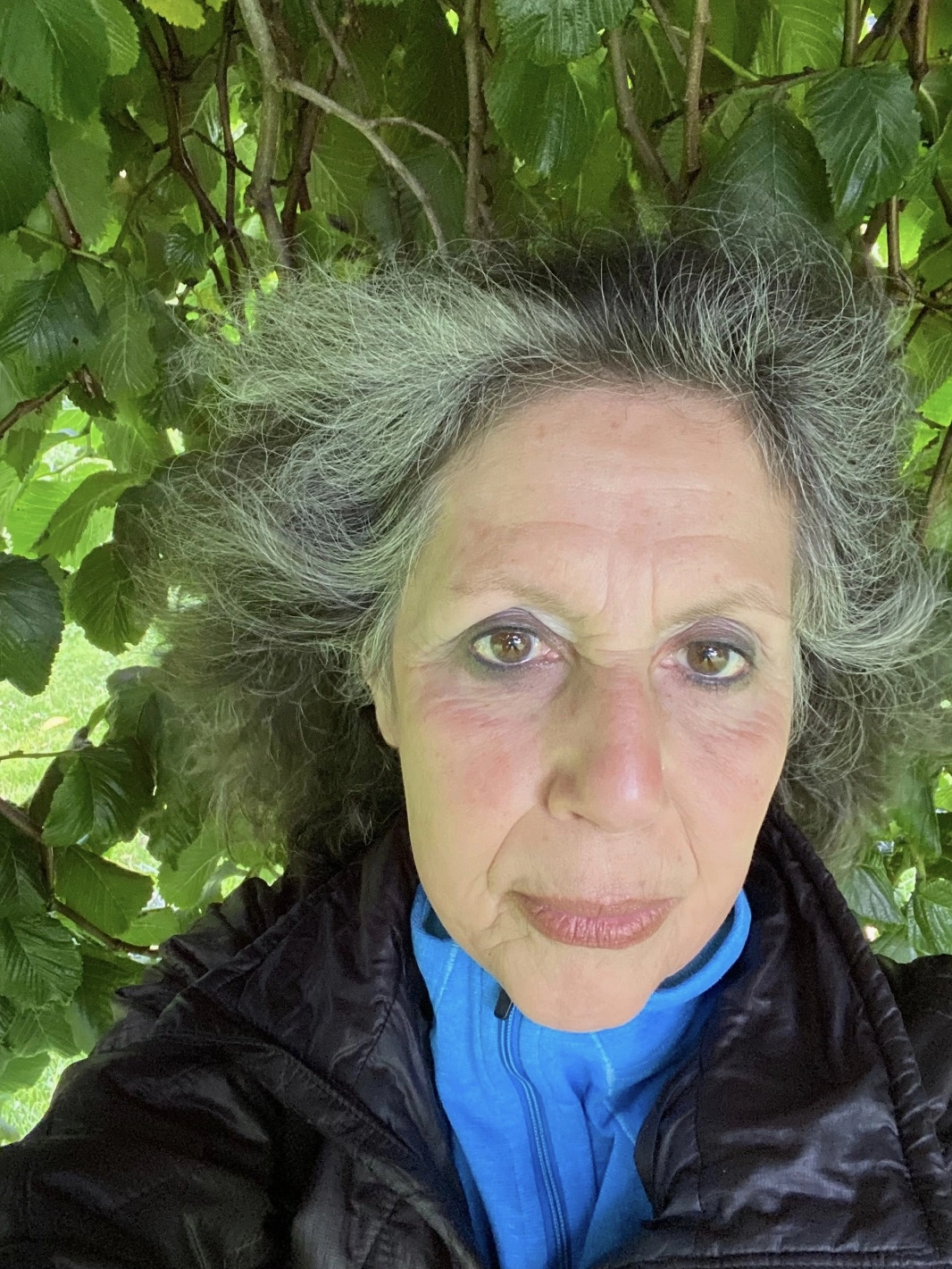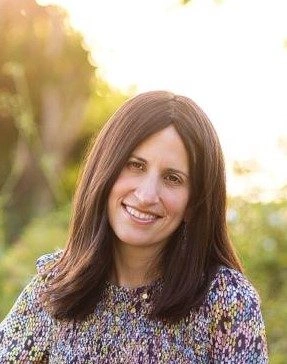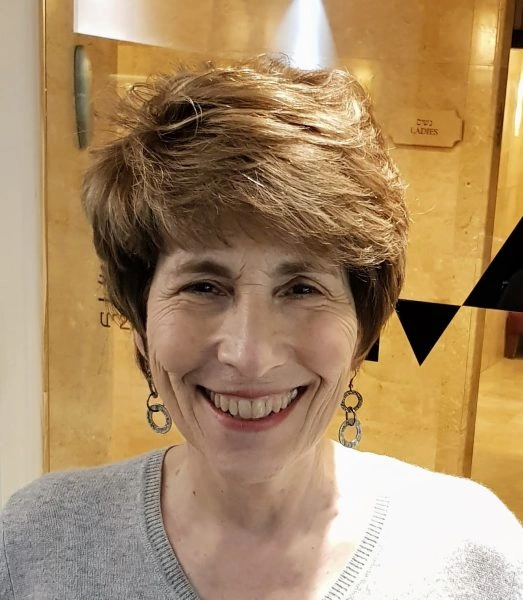Moed Katan 5
קִילְקוּלֵי הַמַּיִם שֶׁבִּרְשׁוּת הָרַבִּים וְכוּ׳. חֲטִיטָה — אִין, חֲפִירָה — לָא.
damaged water cisterns in the public domain and clean them out by removing the dirt and sediment that has accumulated in them. The Gemara infers: Cleaning out the cisterns of dirt and sediment during the intermediate days of a Festival is indeed permitted, but digging a new cistern is not permitted.
אָמַר רַבִּי יַעֲקֹב אָמַר רַבִּי יוֹחָנָן: לֹא שָׁנוּ אֶלָּא שֶׁאֵין רַבִּים צְרִיכִין לָהֶם, אֲבָל רַבִּים צְרִיכִין לָהֶם — אֲפִילּוּ חֲפִירָה מוּתָּר.
Rabbi Ya’akov said that Rabbi Yoḥanan said: They taught that it is prohibited to dig new cisterns only when the public does not need them; but if the public needs them, even digging new cisterns is permitted.
וְכִי רַבִּים צְרִיכִין לָהֶם מִי שְׁרֵי? וְהָתַנְיָא: חוֹטְטִין בּוֹרוֹת שִׁיחִין וּמְעָרוֹת שֶׁל יָחִיד, וְאֵין צָרִיךְ לוֹמַר שֶׁל רַבִּים, וְאֵין חוֹפְרִין בּוֹרוֹת שִׁיחִין וּמְעָרוֹת שֶׁל רַבִּים, וְאֵין צָרִיךְ לוֹמַר שֶׁל יָחִיד. מַאי לָאו, בְּשֶׁרַבִּים צְרִיכִין לָהֶם?!
The Gemara asks: And when the public needs them, is digging really permitted? But isn’t it taught in a baraita: One may clean out cisterns, ditches, and caves of an individual during the intermediate days of a Festival, and, needless to say, one may clean out those of the public. But one may not dig new cisterns, ditches, or caves of the public during the intermediate days of a Festival, and, needless to say, one may not dig those of an individual. What, is it not so that this baraita is referring to a case where the public needs them, but nevertheless digging new cisterns, ditches, and caves is prohibited?
לָא, בְּשֶׁאֵין רַבִּים צְרִיכִין לָהֶם.
The Gemara rejects this opinion: No, this baraita is referring to a case where the public does not need them.
דִּכְווֹתַהּ גַּבֵּי יָחִיד, שֶׁאֵין יָחִיד צָרִיךְ לָהֶם, חֲטִיטָה מִי שְׁרֵי? וְהָתַנְיָא: בּוֹרוֹת שִׁיחִין וּמְעָרוֹת שֶׁל יָחִיד — כּוֹנְסִין מַיִם לְתוֹכָן, אֲבָל לֹא חוֹטְטִין וְלֹא שָׁפִין אֶת סִדְקֵיהֶן. וְשֶׁל רַבִּים — חוֹטְטִין אוֹתָן וְשָׁפִין אֶת סִדְקֵיהֶן.
The Gemara raises a difficulty: It would follow that in the corresponding situation with regard to the cisterns of an individual, the baraita is referring to a case where the individual does not need them. But in that case, is cleaning them out really permitted? Isn’t it taught in a baraita: One may gather water into the cisterns, ditches, and caves of an individual, but one may not clean them out or plaster their cracks; but for those of the public, one may indeed clean out and plaster their cracks? This indicates that on the intermediate days of a Festival, unneeded cisterns belonging to an individual may not even be cleaned out.
וְאֶלָּא מַאי — בְּשֶׁיָּחִיד צָרִיךְ לָהֶם? דִּכְווֹתַהּ גַּבֵּי רַבִּים, בְּשֶׁרַבִּים צְרִיכִין לָהֶם, חֲפִירָה מִי אֲסִיר? וְהָתַנְיָא: בּוֹרוֹת שִׁיחִין וּמְעָרוֹת שֶׁל יָחִיד — כּוֹנְסִין מַיִם לְתוֹכָן וְחוֹטְטִין אוֹתָן, אֲבָל לֹא שָׁפִין אֶת סִדְקֵיהֶן, וְלֹא חוֹטְטִין לְתוֹכָן, וְלֹא סָדִין אוֹתָן בְּסִיד. וְשֶׁל רַבִּים — חוֹפְרִין אוֹתָן, וְסָדִין אוֹתָן בְּסִיד!
The Gemara rejects this difficulty: Rather, to what case does the first baraita refer? Is it referring to a case where the individual needs the cisterns? If so, then in the corresponding situation with regard to cisterns of the public, the baraita would be referring to a case where the public needs them. But in that case, is digging new cisterns really prohibited? Isn’t it taught in yet another baraita: One may gather water into cisterns, ditches, and caves of an individual, and one may clean them out, but one may not plaster their cracks, clear earth into them in order to fill in the cracks, or lime them with lime so that they hold water. But with regard to those of the public, one may even dig them out and lime them with lime. Therefore, in a case where the public needs them, it is permitted to dig out public cisterns.
אֶלָּא קַשְׁיָא הָךְ קַמַּיְיתָא! תָּרֵיץ הָכִי: חוֹטְטִין בּוֹרוֹת שֶׁל יָחִיד בְּשֶׁיָּחִיד צָרִיךְ לָהֶם, וְאֵין צָרִיךְ לוֹמַר בְּשֶׁל רַבִּים כְּשֶׁרַבִּים צְרִיכִין לָהֶם, דַּאֲפִילּוּ חֲפִירָה מוּתָּר.
But if so, the first baraita, which states that one may not dig new cisterns even for the public, is difficult, as it is contradicted by this last baraita. The Gemara explains: Answer the difficulty and explain the first baraita as follows: One may clean out cisterns, ditches, and caves of an individual during the intermediate days of a Festival when the individual needs them; and needless to say, one may clean out those of the public when the public needs them, as even digging new cisterns is permitted when the public needs them.
וְאֵין חוֹפְרִין בּוֹרוֹת שִׁיחִין וּמְעָרוֹת שֶׁל רַבִּים — בְּשֶׁאֵין רַבִּים צְרִיכִין לָהֶם, וְאֵין צָרִיךְ לוֹמַר שֶׁל יָחִיד, דְּכִי אֵין יָחִיד צָרִיךְ לָהֶם — אֲפִילּוּ חֲטִיטָה נָמֵי אָסוּר.
But one may not dig cisterns, ditches and caves for the public when the public does not need them. And needless to say, one may not dig them for an individual, as when an individual does not need the cisterns on the intermediate days of a Festival, even cleaning them out is prohibited. In this way all of the seemingly contradictory sources can be reconciled.
אָמַר רַב אָשֵׁי: מַתְנִיתִין נָמֵי דַּיְקָא, דְּקָתָנֵי: עוֹשִׂין כׇּל צוֹרְכֵי רַבִּים, ״כׇּל״ לְאֵתוֹיֵי מַאי — לָאו לְאֵתוֹיֵי חֲפִירָה?
Rav Ashi said: The wording of the mishna is also precise, indicating that when there is a public need for such cisterns, they may be dug even on the intermediate days of a Festival. As it teaches: One may tend to all other public needs. What does the word all come to add that was not stated explicitly? Does it not come to add the digging of cisterns, which is permitted?
לָא, לְאֵתוֹיֵי הָא דְּתַנְיָא: יוֹצְאִין לְקַוֵּוץ אֶת הַדְּרָכִים, וּלְתַקֵּן אֶת הָרְחוֹבוֹת וְאֶת הָאִסְטְרָטָאוֹת, וְלָמוֹד אֶת הַמִּקְוָאוֹת. וְכׇל מִקְוֶה שֶׁאֵין בּוֹ אַרְבָּעִים סְאָה מַרְגִּילִין לְתוֹכוֹ, אַרְבָּעִים סְאָה.
The Gemara rejects this opinion: No, the word all comes to add that which is taught in the following baraita: On the intermediate days of a Festival, agents of the court go out to clear thorns from the road, and to repair the city streets and highways [isterata’ot], and to measure the ritual baths to ascertain that they have the requisite quantity of water. And if any ritual bath does not contain forty se’a, the minimal measure for ritual purification, they direct [margilin] a stream of water into it, such that it flows over the ground before entering the bath, so as not to disqualify the water as drawn water until it holds forty se’a of water.
וּמִנַּיִן שֶׁאִם לֹא יָצְאוּ וְעָשׂוּ כׇּל אֵלּוּ, שֶׁכׇּל דָּמִים שֶׁנִּשְׁפְּכוּ שָׁם מַעֲלֶה עֲלֵיהֶם הַכָּתוּב כְּאִילּוּ הֵם שְׁפָכוּם — תַּלְמוּד לוֹמַר: ״וְהָיָה עָלֶיךָ דָּמִים״.
And from where is it derived that if agents of the court did not go out and do all these repairs, that with regard to any blood that is shed there on account of their negligence, the verse ascribes to them guilt as if they had shed it? The verse states with regard to the cities of refuge that offer protection to someone who committed inadvertent manslaughter: “That innocent blood be not shed in your land, which the Lord your God gives you for an inheritance, and so blood be upon you” (Deuteronomy 19:10). The Gemara maintains that the mishna uses the word all to allude to the cases mentioned in this baraita, and not to the digging of public cisterns.
הָא בְּהֶדְיָא קָתָנֵי לַהּ: וּמְתַקְּנִין אֶת הַדְּרָכִים וְאֶת הָרְחוֹבוֹת וְאֶת הַמִּקְוָאוֹת. וְעוֹשִׂין כׇּל צוֹרְכֵי רַבִּים לְאֵתוֹיֵי מַאי — לָאו לְאֵתוֹיֵי חֲפִירָה? שְׁמַע מִינַּהּ.
The Gemara questions this: But these additional cases are explicitly taught in the mishna: One may repair the roads, streets, and ritual baths, and one may tend to all other public needs. What does this last phrase come to add? Does it not come to add the digging of cisterns needed by the public? The Gemara agrees: Conclude from this that the mishna means to permit the digging of new cisterns when they are needed by the public.
מְצַיְּנִין אֶת הַקְּבָרוֹת. אָמַר רַבִּי שִׁמְעוֹן בֶּן פַּזִּי: רֶמֶז לְצִיּוּן קְבָרוֹת מִן הַתּוֹרָה מִנַּיִן, תַּלְמוּד לוֹמַר: ״וְרָאָה עֶצֶם אָדָם וּבָנָה אֶצְלוֹ צִיּוּן״.
§ It was taught in the mishna: One may mark graves on the intermediate days of a Festival so that passersby will know to avoid them and not become ritually impure. Rabbi Shimon ben Pazi said: Where is there an allusion in the Torah to the marking of graves? The verse states: “And when they that pass through shall pass through the land, and any see a man’s bone, then shall he set up a sign by it” (Ezekiel 39:15). Ezekiel prophesies that at some future time, the Jewish people will erect signs over the strewn remains of the dead so that others will know to avoid ritual impurity.
אֲמַר לֵיהּ רָבִינָא לְרַב אָשֵׁי: הָא מִקַּמֵּי דְּלֵיתֵי יְחֶזְקֵאל, מַאן אֲמַר? וְלִיטַעְמָיךְ, הָא דְּאָמַר רַב חִסְדָּא: דָּבָר זֶה, מִתּוֹרַת מֹשֶׁה רַבֵּינוּ לֹא לָמַדְנוּ, מִדִּבְרֵי יְחֶזְקֵאל בֶּן בּוּזִי לָמַדְנוּ: ״כׇּל בֶּן נֵכָר עֶרֶל לֵב וְעֶרֶל בָּשָׂר לֹא יָבֹא אֶל מִקְדָּשִׁי לְשָׁרְתֵנִי״ —
Ravina said to Rav Ashi: Before the prophet Ezekiel came and alluded to this obligation, who said that graves must be marked? Even before the time of Ezekiel, people were careful with regard to ritual impurity. Rav Ashi responded: And according to your reasoning, that Ezekiel was introducing a new halakha, the same question can be raised with regard to this statement that Rav Ḥisda said. As Rav Ḥisda said with regard to the halakha that one who is uncircumcised or an apostate may not serve in the Temple: This matter we did not learn from the Torah of Moses our teacher, but rather, we learned it from the words of the prophet Ezekiel ben Buzi, who said of such individuals: “No stranger, uncircumcised in heart, or uncircumcised in flesh, shall enter into My Sanctuary to serve Me” (Ezekiel 44:9).
מִקַּמֵּי דְּלֵיתֵי יְחֶזְקֵאל, מַאן אֲמַר? אֶלָּא גְּמָרָא גְּמִירִי לַהּ וַאֲתָא יְחֶזְקֵאל וְאַסְמְכַהּ אַקְּרָא, הָכָא נָמֵי: גְּמָרָא גְּמִירִי לַהּ, וַאֲתָא יְחֶזְקֵאל וְאַסְמְכַהּ אַקְּרָא.
Here too, one can ask: Before Ezekiel came, who said that such individuals cannot serve in the Temple? Rather, you must say that originally they learned it as a tradition and it was an accepted halakha for generations, and then Ezekiel came and based it on a verse. Here too, with regard to the obligation to mark graves, they originally learned it as a tradition, and then Ezekiel came and based it on a verse.
רַבִּי אֲבָהוּ אָמַר, מֵהָכָא: ״וְטָמֵא טָמֵא יִקְרָא״ — טוּמְאָה קוֹרְאָה לוֹ וְאוֹמֶרֶת לוֹ ״פְּרוֹשׁ״. וְכֵן אָמַר רַבִּי עוּזִּיאֵל בַּר בְּרֵיהּ דְּרַבִּי עוּזִּיאֵל רַבָּה: טוּמְאָה קוֹרְאָהּ לוֹ וְאוֹמֶרֶת לוֹ ״פְּרוֹשׁ״.
Rabbi Abbahu said: An allusion to the marking of graves may be derived from here: “And the leper in whom the plague is, his clothes shall be rent, and the hair of his head shall go loose, and he shall cover his upper lip, and shall cry: Impure, impure” (Leviticus 13:45). This verse teaches that impurity cries out to the passerby and tells him: Remove yourself. The leper must inform others of his status so that they know not to come into contact with him and thereby maintain their ritual purity. So too, in our case, graves must be marked so that others will know to avoid them and prevent contracting ritual impurity. And similarly, Rabbi Uzziel, grandson of Rabbi Uzziel the Great, said: Impurity cries out to the passerby and tells him: Remove yourself.
וְהַאי לְהָכִי הוּא דַּאֲתָא? הַהוּא מִיבְּעֵי לֵיהּ לְכִדְתַנְיָא: ״וְטָמֵא טָמֵא יִקְרָא״. צָרִיךְ לְהוֹדִיעַ צַעֲרוֹ לְרַבִּים, וְרַבִּים מְבַקְּשִׁין עָלָיו רַחֲמִים!
The Gemara asks: But with regard to this verse, does it come to teach this idea? That verse is needed for that which is taught in the following baraita: “And he shall cry: Impure, impure”; this teaches that the leper must inform the public of his distress, and the public will pray for mercy on his behalf.
אִם כֵּן, לִיכְתּוֹב: ״וְטָמֵא יִקְרָא״, מַאי ״וְטָמֵא טָמֵא״ — שָׁמְעַתְּ מִינַּהּ תַּרְתֵּי.
The Gemara answers: If it is so that the verse comes to teach only one idea, let it write: And he shall cry: Impure. What is to be derived the repetition of impure, impure? Learn from this reiteration two ideas: First, that the leper must inform the public of his pain so that others will pray on his behalf, and second, that he must warn the public to stay away so that they avoid coming into contact with him and contracting ritual impurity.
אַבָּיֵי אָמַר, מֵהָכָא: ״וְלִפְנֵי עִוֵּר לֹא תִתֵּן מִכְשׁוֹל״. רַב פָּפָּא אָמַר: ״וְאָמַר סֹלּוּ סֹלּוּ פַּנּוּ דָרֶךְ״.
Abaye said: An allusion to the marking of graves may be learned from here, as it is written: “You shall not put a stumbling block before the blind” (Leviticus 19:14). Rav Pappa said the obligation is alluded to in the verse: “And He will say: Pave, pave, clear the way, take up the stumbling block out of the way of My people” (Isaiah 57:14), which indicates that roads must be cleared of all obstacles and hazards.
רַב חִינָּנָא אָמַר: ״הָרִימוּ מִכְשׁוֹל מִדֶּרֶךְ עַמִּי״. רַבִּי יְהוֹשֻׁעַ בְּרֵיהּ דְּרַב אִידִי אָמַר: ״וְהוֹדַעְתָּ לָהֶם אֶת הַדֶּרֶךְ אֲשֶׁר יֵלְכוּ בָהּ״.
Rav Ḥinnana said: This may be derived from the end of that very same verse: “Take up the stumbling block from the way of My people” (Isaiah 57:14). Rabbi Yehoshua, son of Rav Idi, said: This may be derived from the verse: “And you shall show them the way in which they must walk” (Exodus 18:20), i.e., you must properly repair the roads, which includes marking graves.
מָר זוּטְרָא אָמַר: ״וְהִזַּרְתֶּם אֶת בְּנֵי יִשְׂרָאֵל מִטּוּמְאָתָם״. רַב אָשֵׁי אָמַר: ״וּשְׁמַרְתֶּם אֶת מִשְׁמַרְתִּי״ — עֲשׂוּ מִשְׁמֶרֶת לְמִשְׁמַרְתִּי.
Mar Zutra said that an allusion to this obligation is found in the verse “Thus you shall separate the children of Israel from their impurity” (Leviticus 15:31), which indicates that people must be warned to stay away from that which could cause them to become ritually impure. Rav Ashi said it is derived from the verse: “And you shall keep My charge” (Leviticus 18:30), which means that you must establish a safeguard for My charge, i.e., protective measures must be enacted to prevent people from transgressing halakha, a task that includes distancing people from ritual impurity by marking off graves, so that they not come to convey ritual impurity to teruma or other consecrated items.
רָבִינָא אָמַר: ״וְשָׂם דֶּרֶךְ אַרְאֶנּוּ בְּיֵשַׁע אֱלֹהִים״.
And finally, Ravina said: This obligation is alluded to by the verse “And to him who orders his way, I will show the salvation of God” (Psalms 50:23), meaning that one must mark the pathways that are ritually pure and upon which it is appropriate to walk.
אָמַר רַבִּי יְהוֹשֻׁעַ בֶּן לֵוִי: כׇּל הַשָּׁם אוֹרְחוֹתָיו — זוֹכֶה וְרוֹאֶה בִּישׁוּעָתוֹ שֶׁל הַקָּדוֹשׁ בָּרוּךְ הוּא, שֶׁנֶּאֱמַר: ״וְשָׂם דֶּרֶךְ״, אַל תִּקְרֵי ״וְשָׂם״, אֶלָּא: ״וְשָׁם דֶּרֶךְ״ — ״אַרְאֶנּוּ בְּיֵשַׁע אֱלֹהִים״.
With regard to the verse from Psalms cited above, Rabbi Yehoshua ben Levi said: Whoever appraises his ways in this world and contemplates how to act in the most appropriate way possible merits seeing the salvation of the Holy One, Blessed be He, as it is stated: “And to him who orders his way.” Do not read it as vesam, who orders; rather, read it as vesham, and appraises. With this reading, the verse indicates that one who appraises his ways, him will I show the salvation of God.
רַבִּי יַנַּאי הֲוָה לֵיהּ הָהוּא תַּלְמִידָא דְּכׇל יוֹמָא הֲוָה מַקְשֵׁי לֵיהּ, בְּשַׁבְּתָא דְרִיגְלָא לָא הֲוָה מַקְשֵׁי לֵיהּ,
Rabbi Yannai had a certain student who would raise difficulties with his teachings every day as they were learning. On Shabbat of a Festival, when the broader public would come to hear the lesson, the student would not raise any difficulties, lest Rabbi Yannai lack an immediate answer and suffer embarrassment.
קָרֵי עֲלֵיהּ: ״וְשָׂם דֶּרֶךְ אַרְאֶנּוּ בְּיֵשַׁע אֱלֹהִים״.
Rabbi Yannai read this verse about him: “And to him who orders his way, I will show the salvation of God” (Psalms 50:23), for he considered his conduct and determined when it was inappropriate to challenge his master.
תָּנוּ רַבָּנַן: אֵין מְצַיְּנִין לֹא עַל כַּזַּיִת מִן הַמֵּת, וְלֹא עַל עֶצֶם כִּשְׂעוֹרָה, וְלֹא עַל דָּבָר שֶׁאֵינוֹ מְטַמֵּא בְּאֹהֶל. אֲבָל מְצַיְּנִין עַל הַשִּׁדְרָה, וְעַל הַגּוּלְגּוֹלֶת, עַל רוֹב בִּנְיַן, וְעַל רוֹב מִנְיַן הַמֵּת.
§ With regard to the halakhot of marking graves, the Sages taught the following baraita: The courts do not mark the area of an olive-bulk of a corpse; nor of a bone that is the size of a barleygrain-bulk; nor of any item that imparts impurity only through physical contact but does not impart ritual impurity by means of a tent to an individual or object that it overshadows, or that is overshadowed by it, or that is found together with it under the same structure. But they do mark the area of the spine of a corpse, the skull, or the bones that comprise the majority of the skeletal structure or the majority of the number of bones in the body.
וְאֵין מְצַיְּנִין עַל הַוַּודָּאוֹת, אֲבָל מְצַיְּנִין עַל הַסְּפֵיקוֹת. וְאֵלּוּ הֵן הַסְּפֵיקוֹת: סְכָכוֹת וּפְרָעוֹת וּבֵית הַפְּרָס. וְאֵין מַעֲמִידִין צִיּוּן בִּמְקוֹם טוּמְאָה, שֶׁלֹּא לְהַפְסִיד אֶת הַטְּהָרוֹת. וְאֵין מַרְחִיקִין צִיּוּן מִמְּקוֹם טוּמְאָה, שֶׁלֹּא לְהַפְסִיד אֶת אֶרֶץ יִשְׂרָאֵל.
And furthermore, they do not mark the area of certain ritual impurity, i.e., a place that is known to all as ritually impure, but they do mark a place of uncertain ritual impurity. And these are the places of uncertain ritual impurity: Overhanging boughs, protrusions, and a beit haperas. And they do not erect the marker directly over the site of the ritual impurity, so as not to cause a loss of ritually pure food items, as one who is carrying such food might inadvertently walk up to the site of ritual impurity and only then notice the marker, after the food has already contracted impurity. Similarly, they do not distance the marker from the actual site of ritual impurity, so as not to cause a loss of Eretz Yisrael, i.e., so as not to increase the area into which individuals refrain from entering.
וּכְזַיִת מִן הַמֵּת אֵינוֹ מְטַמֵּא בְּאֹהֶל? וְהָא תְּנַן: אֵלּוּ שֶׁמְּטַמְּאִין בְּאֹהֶל — כְּזַיִת מִן הַמֵּת!
The Gemara begins to analyze this baraita by asking: Is it really so that an olive-bulk of a corpse does not impart ritual impurity by means of a tent? But didn’t we learn in a mishna (Oholot 2:1): These are the items that impart ritual impurity by means of a tent, and among other items this list includes an olive-bulk of a corpse?
אָמַר רַב פָּפָּא: הָכָא בִּכְזַיִת מְצוּמְצָם עָסְקִינַן, דְּסוֹף סוֹף מִיחְסָר חָסַר. מוּטָב יִשָּׂרְפוּ עָלָיו תְּרוּמָה וְקׇדָשִׁים לְפִי שָׁעָה, וְאַל יִשָּׂרְפוּ עָלָיו לְעוֹלָם.
Rav Pappa said: Here, we are dealing with a case where the piece of flesh is exactly an olive-bulk, which, as it decays, will ultimately diminish in size to less than an olive-bulk. Accordingly, it is preferable that teruma and consecrated items be burned because of it for the time being, in a case where one inadvertently encounters this impurity because it was not marked and consequently one must burn any teruma or consecrated items that became ritually impure, and not be burned because of it forever afterward. After some time the piece of flesh will be less than an olive-bulk, yet if the area is marked, people will continue to burn teruma or consecrated items because of it, as, due to the marking, they will assume that ritual impurity was imparted by means of a tent.
וְאֵלּוּ הֵן הַסְּפֵיקוֹת: סְכָכוֹת וּפְרָעוֹת.
The Gemara continues to explicate the baraita: And these are the places of uncertain ritual impurity: Overhanging boughs, and protrusions, and a beit haperas.
סְכָכוֹת — אִילָן הַמֵּיסֵךְ עַל הָאָרֶץ.
The Gemara explains: Overhanging boughs is referring to a tree that hangs over the ground next to a cemetery, and under one of its branches there might be a corpse. If there is a corpse there, the branch overhanging it creates a tent and therefore imparts ritual impurity to anyone who passes underneath it.
פְּרָעוֹת — אֲבָנִים פְּרוּעוֹת הַיּוֹצְאוֹת מִן הַגָּדֵר.
Protrusions is referring to protruding stones that jut out from a wall and are not flush with it, under which there might be a corpse. Once again, if the stones protrude over a corpse, they create a tent and impart ritual impurity to anyone who passes underneath.
בֵּית הַפְּרָס, כְּדִתְנַן: הַחוֹרֵשׁ אֶת הַקֶּבֶר הֲרֵי הוּא עוֹשֶׂה בֵּית הַפְּרָס, וְכַמָּה הוּא עוֹשֶׂה — מְלֹא מַעֲנֶה מֵאָה אַמָּה.
The definition of a beit haperas is as we learned elsewhere in a mishna (Oholot 17:1): One who plows a field containing a grave, thereby raising concern that bones may have become strewn throughout the field, renders the field a beit haperas. And how much of the field does he render a beit haperas? The full length of a furrow, which is a hundred cubits.
וּבֵית הַפְּרָס מִי מְטַמֵּא בְּאֹהֶל? וְהָאָמַר רַב יְהוּדָה אָמַר שְׁמוּאֵל: מְנַפֵּחַ אָדָם בֵּית הַפְּרָס וְהוֹלֵךְ.
The Gemara asks: Does a beit haperas really impart ritual impurity by means of a tent? But didn’t Rav Yehuda say that Shmuel said: If a person is carrying ritually pure items or wishes to remain ritually pure so that he may consume consecrated items, yet he must cross a beit haperas, he may blow upon the earth in the beit haperas before each step to clear away any small bones that may have become strewn across the field and proceed to walk across the area, thereby remaining ritually pure. This indicates that there is no concern about contracting ritual impurity by means of a tent in a beit haperas; otherwise, it would be prohibited to cross in this way, as it is possible that in the course of blowing one may already have contracted ritual impurity by leaning over the bones or by passing over bones that are buried beneath the surface.
וְרַב יְהוּדָה בַּר אַמֵּי מִשְּׁמֵיהּ דְּעוּלָּא אָמַר: בֵּית הַפְּרָס שֶׁנִּידַּשׁ — טָהוֹר!
Similarly, Rav Yehuda bar Ami said in the name of Ulla: A beit haperas that was trampled, i.e., a well-trodden beit haperas, is ritually pure, as passersby have certainly cleared away any bones with their feet. If a beit haperas were to impart ritual impurity by means of a tent, there should be a concern that the bones may have been trampled upon and buried in the ground. Both these sources prove that a beit haperas does not impart impurity by means of tent, posing a contradiction to the mishna.
אָמַר רַב פָּפָּא, לָא קַשְׁיָא: כָּאן בְּשָׂדֶה שֶׁאָבַד בָּהּ קֶבֶר, כָּאן בְּשָׂדֶה שֶׁנֶּחְרַשׁ בָּהּ קֶבֶר.
Rav Pappa said: It is not difficult, as a distinction can be made between different types of beit haperas: Here, where the baraita states that a beit haperas must be marked because it imparts tent impurity, it is referring to a field in which a grave was lost, i.e., a field that was known with certainty to contain a grave, though its precise location can no longer be recalled. There, where it ruled that a beit haperas does not convey tent impurity, it is a case of a field where a grave was plowed and it is not at all clear whether there are bones strewn across the field. In that case ritual impurity is not imparted by means of a tent, and so it need not be marked.
וְשָׂדֶה שֶׁנֶּחְרַשׁ בָּהּ קֶבֶר, בֵּית הַפְּרָס קָרֵי לֵיהּ? אִין, וְהָתְנַן: שְׁלֹשָׁה בֵּית הַפְּרָס הֵן: שָׂדֶה שֶׁנֶּאֱבַד בָּהּ קֶבֶר, וְשָׂדֶה שֶׁנֶּחְרַשׁ בָּהּ קֶבֶר, וּשְׂדֵה בוֹכִין.
The Gemara asks: But is a field where a grave was plowed called a beit haperas, such that one must be concerned about its ritual impurity? The Gemara answers: Yes, and so we learned in a mishna (Oholot 18:2–4): There are three types of beit haperas through which those who eat teruma and consecrated items are prohibited to walk: A field in which a grave was lost and its precise location is no longer known, a field in which a grave was plowed and bones may have been scattered about, and a weepers’ field.
מַאי ״שְׂדֵה בוֹכִין״? רַב יְהוֹשֻׁעַ בַּר אַבָּא מִשְּׁמֵיהּ דְּעוּלָּא אָמַר: שָׂדֶה שֶׁמַּפְטִירִין בָּהּ מֵתִים.
The Gemara asks: What is meant by a weepers’ field? Rav Yehoshua bar Abba said in the name of Ulla: A field where those escorting the deceased would take leave of the deceased, handing the corpse over to those who would perform the actual interment.
וְטַעְמָא מַאי, אָמַר אֲבִימִי: מִשּׁוּם יֵאוּשׁ בְּעָלִים נָגְעוּ בָּהּ.
And what is the reason that one must be concerned about ritual impurity in a weepers’ field? Avimi said: It is due to the possible despair by the owners of recovering bones that the Sages touched upon it. There is a concern that in transporting the deceased from far away, a loose limb may have fallen from the corpse into the field, and unseen by those transporting the deceased, it was abandoned there. Since over time many corpses passed through this weepers’ field, it is assumed that ritual impurity might be found in many places throughout the field.
וּשְׂדֵה שֶׁנֶּחְרַשׁ בָּהּ קֶבֶר לָא בָּעֵי צִיּוּן? וְהָא תַּנְיָא: מָצָא שָׂדֶה מְצוּיֶּנֶת וְאֵין יָדוּעַ מָה טִיבָהּ, יֵשׁ בָּהּ אִילָנוֹת — בְּיָדוּעַ שֶׁנֶּחְרַשׁ בָּהּ קֶבֶר. אֵין בָּהּ אִילָנוֹת — בְּיָדוּעַ שֶׁאָבַד בָּהּ קֶבֶר.
The Gemara asks: And does a field in which a grave was plowed not require marking? But isn’t it taught in a baraita: If one encountered a field that was marked due to ritual impurity, and it is no longer known what the nature of the ritual impurity was, if there are trees in the field, it is known that a grave was plowed in it, as it is permitted for one to plant trees in such a field. If there are no trees in the field, it is known that a grave was lost in it, as it is prohibited for one to plant trees in such a field. If a field is suitable for planting trees and yet there are none, clearly it is because a grave was lost in it.
רַבִּי יְהוּדָה אוֹמֵר: עַד שֶׁיְּהֵא שָׁם זָקֵן אוֹ תַּלְמִיד, לְפִי שֶׁאֵין הַכֹּל בְּקִיאִין בַּדָּבָר!
Rabbi Yehuda says: We do not rely on these signs unless there is an Elder or a rabbinic scholar who can testify about the subject, as not all are experts in this matter, and perhaps the field was not plowed at all. In any case, this baraita teaches that a field in which a grave was plowed is also marked.
אָמַר רַב פָּפָּא: כִּי תַּנְיָא הָהִיא, בְּשָׂדֶה שֶׁאָבַד בָּהּ קֶבֶר דְּצַיְּינוּהָ. יֵשׁ בָּהּ אִילָנוֹת — בְּיָדוּעַ שֶׁנֶּחְרַשׁ בָּהּ קֶבֶר, אֵין בָּהּ אִילָנוֹת — בְּיָדוּעַ שֶׁאָבַד בָּהּ קֶבֶר.
The Gemara answers: Rav Pappa said: When that baraita concerning a marked field is taught, it is taught with regard to a field where a grave was certainly lost and they immediately marked it. However, if there are trees in the field, it is known that a grave was later plowed in it, i.e., it was forgotten that a grave had been lost in the field and so it was inappropriately plowed and prepared for planting. But if there are no trees in the field, we know that a grave was lost in it and it was not later plowed.
וְלֵיחוּשׁ דִּלְמָא אִילָנוֹת מִגַּוַּאי וְקֶבֶר מִבָּרַאי?
The Gemara raises a question about this ruling: But let us be concerned that perhaps the trees were located inside the field and the grave was located outside of it, and the actual site of the grave was never plowed but simply lost? How then can one rely on the presence of trees to indicate that the grave had been plowed in the field?
כִּדְאָמַר עוּלָּא: בְּעוֹמְדִין עַל הַגְּבוּלִין, הָכָא נָמֵי: בְּעוֹמְדִין עַל הַגְּבוּלִין.
The Gemara answers: It is as Ulla said elsewhere. This is a case where the trees are standing along the field’s boundaries, next to a public domain, as the grave is certainly not outside the trees in the public domain, since people do not bury a corpse in the public thoroughfare. Rather, the grave must be between the trees, and was therefore plowed. Here too, then, this is a case where the trees are standing along the borders.



